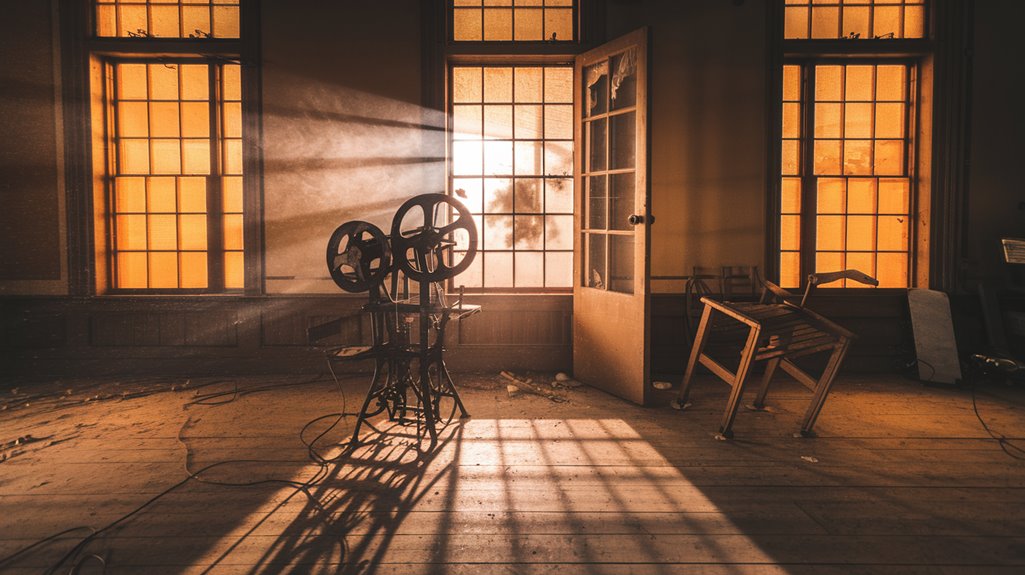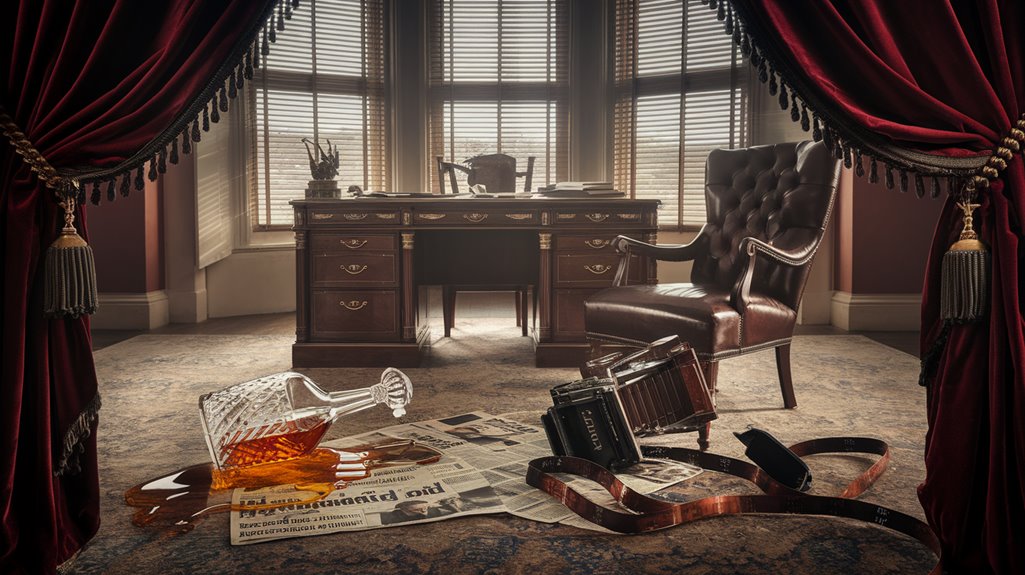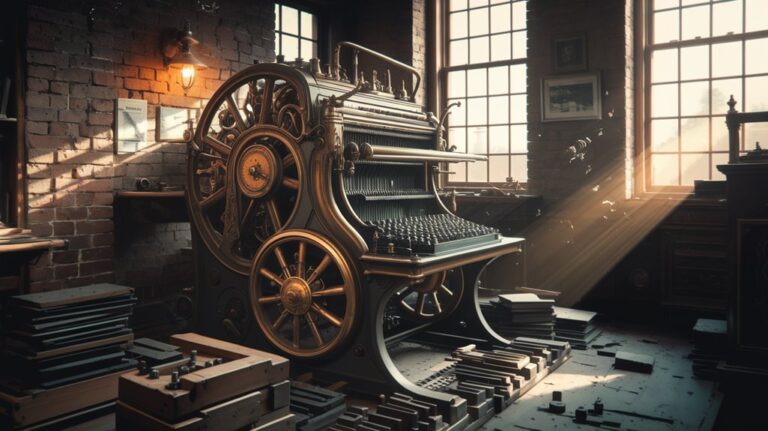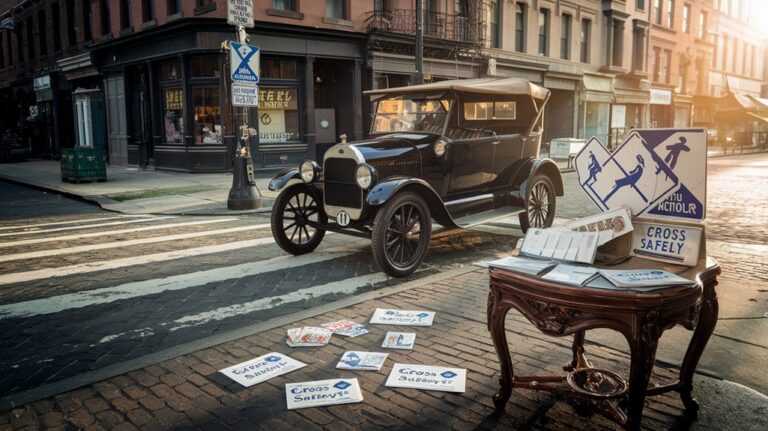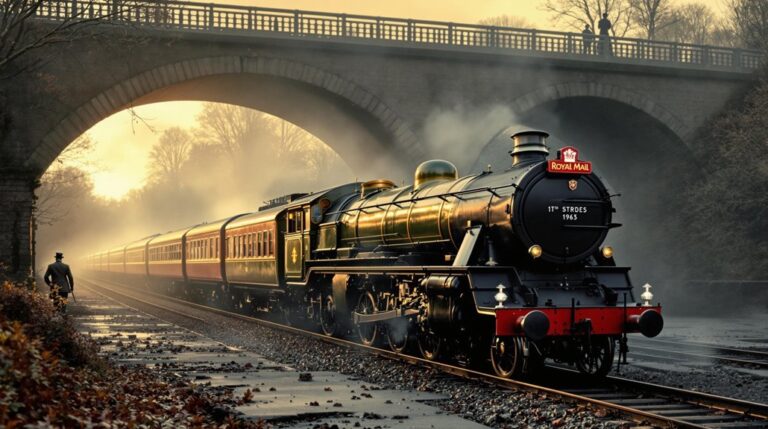One Grisly Murder That Nearly Ended Motion Pictures
You've likely heard tales of Hollywood's dark side, but none quite like the murder of William Desmond Taylor. On a February morning in 1922, this respected director's death sent shockwaves through the film industry that threatened its very existence. What began as a simple homicide investigation soon unraveled into a web of scandal, lies, and cover-ups that would forever change how America viewed its silver screen idols. The truth behind Taylor's murder still haunts Tinseltown today.
The Night Hollywood Lost Its Innocence
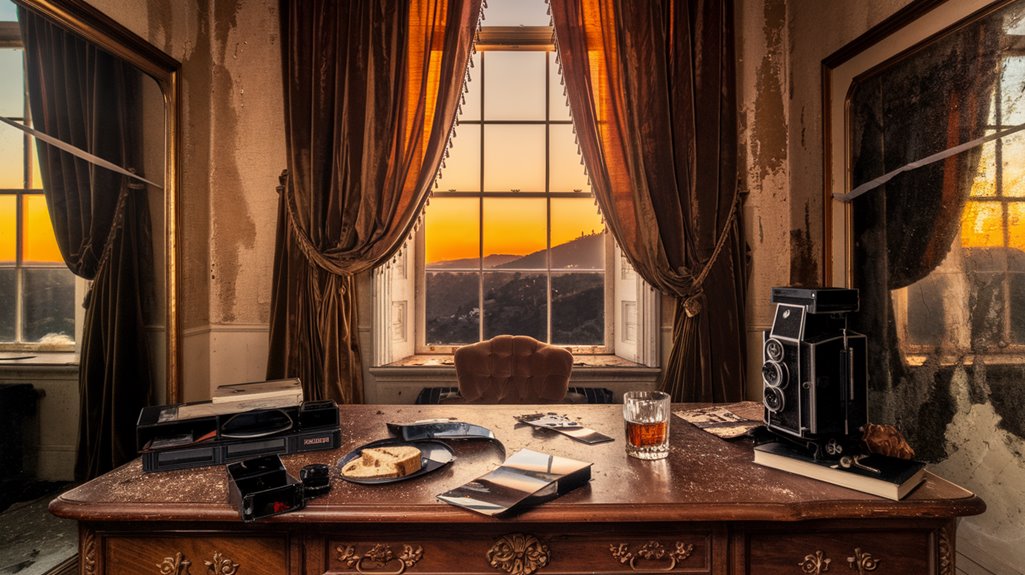
While Hollywood has always captivated audiences with its glitz and glamour, a series of unsolved murders beginning in the 1920s shattered the industry's carefully crafted facade.
The changing youth culture of the 1960s and '70s brought a darker edge to Hollywood's image, mirroring broader societal shifts. You'll find Hollywood's darkness particularly evident in cases like Barbara Colby's 1975 murder and Natalie Wood's mysterious 1981 death, which exposed the vulnerability of even the biggest stars.
Celebrity vulnerability reached new heights with shocking cases like Peter Ivers' brutal hammer killing in 1983 and Sal Mineo's unsolved murder.
These tragedies transformed public perception of the entertainment industry, revealing its sinister underbelly. The deaths of Dominique Dunne and Bonnie Lee Bakley further eroded Hollywood's pristine image, while Robert Blake's subsequent trial highlighted the complex relationship between fame, power, and justice. The case sent shockwaves through the industry when Blake was found liable in civil court despite his criminal acquittal.
Each case peeled back another layer of the industry's polished veneer.
A Director's Final Scene
As filmmakers began pushing the boundaries of on-screen violence in the 1960s, Hollywood's approach to depicting murder underwent a dramatic transformation.
You'll find this shift most evident in Herschell Gordon Lewis's pioneering splatter film "Blood Feast" (1963), which sparked both cult following and outrage with its graphic content.
The cinematic evolution continued as censorship restrictions loosened, allowing directors to explore more realistic portrayals of violence. Drawing from credible industry experts, filmmakers consulted with forensics specialists to enhance authenticity in their murder scenes.
Films like "The Godfather" and "Halloween" revolutionized how you experience on-screen murder through innovative techniques and intimate point-of-view shots. Jacobson's film achieved striking realism on a budget of $1 million, demonstrating that impactful storytelling didn't require massive resources.
While some filmmakers faced career-ending backlash for their controversial work, others like David Jacobson chose to examine the psychological aspects of killers without exploitation.
The MPAA rating system's introduction helped navigate this new territory, though distribution challenges persisted for the most extreme content.
The Cover-Up That Shook Tinseltown
Behind the glittering facade of Hollywood's golden years lurked a sinister network of cover-ups that would eventually crack the foundation of Tinseltown's carefully crafted image.
You wouldn't have recognized the true Hollywood Secrets beneath the glamorous surface. Studios wielded immense power, using threats, bribes, and manipulation to suppress scandalous affairs and criminal behavior. The infamous crack cocaine epidemic paralleled the industry's darkest era.
From Alfred Hitchcock's obsessive harassment of Tippi Hedren to Loretta Young's forced concealment of her child with Clark Gable, the industry's dark underbelly remained hidden through calculated legal maneuvers and media control. The shocking murder of Sharon Tate by the Manson Family cult exposed a new level of violence that Hollywood could no longer conceal.
The system protected powerful figures through a web of lawyers, PR teams, and NDAs.
It wasn't until recent movements like #MeToo exposed cases like Harvey Weinstein's decades of abuse that this culture of silence began to crumble, revealing the true cost of Hollywood's long-standing cover-ups.
When Movie Magic Turned Murder
Throughout cinema's evolution, the portrayal of murder has transformed from subtle implications to graphic depictions that push artistic boundaries.
You'll notice how the abolishment of the Hays Code opened floodgates for increasingly explicit cinematic violence, particularly in exploitation films of the '60s and '70s. The 1967 film "Bonnie and Clyde" was groundbreaking in its violent death scene, setting new standards for depicting brutality in Hollywood.
The moral implications of depicting real-life crimes have challenged filmmakers to balance authenticity with sensitivity. These films often explore the theme of human vs human conflict while examining the darker aspects of society.
When you watch films like "Dahmer" or "Goodfellas," you're witnessing attempts to explore the psychological complexity behind violent acts without glorifying them.
These portrayals often serve as mirrors to society's fears and fascinations with crime.
You'll find that modern audiences have become increasingly desensitized to on-screen violence, sparking ongoing debates about censorship and responsible filmmaking in Hollywood.
The Scandal That Changed Film Forever
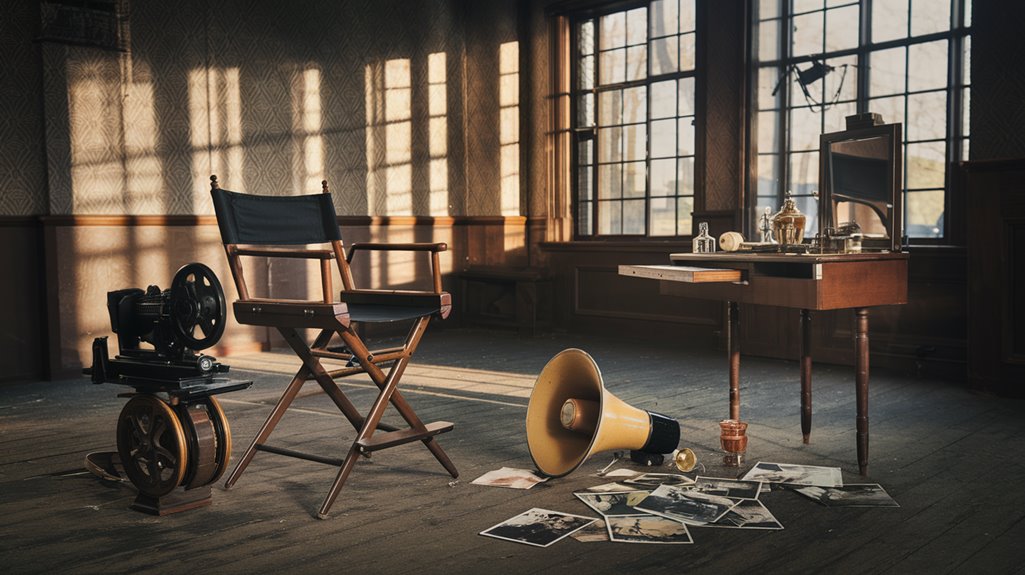
The 1922 murder of William Desmond Taylor shattered Hollywood's carefully crafted facade of glamour and innocence.
You wouldn't believe how quickly Celebrity Scandals consumed the nation's attention as Hollywood Secrets began spilling into newspapers across America.
The aftermath of Taylor's death exposed a darker side of the film industry that you couldn't ignore:
- Studio executives scrambled to cover up evidence at the crime scene
- Major stars became prime suspects in the investigation
- The public's perception of Hollywood morality crumbled overnight
- New "morality clauses" appeared in actor contracts
What started as a single murder investigation snowballed into an industry-wide reckoning. Just as movie pioneer Buster Keaton stood by his friend Fatty Arbuckle during the star's own scandal in 1921, risking his reputation in the process.
The case remains unsolved, but its impact forever changed how studios managed their stars and how America viewed its silver screen idols.
Notorious scandal-monger Bambina Maude Delmont traveled across the country spreading tales of Hollywood's dark underbelly.

